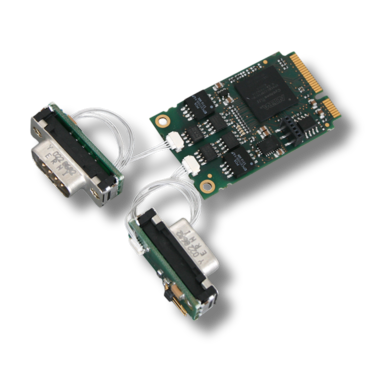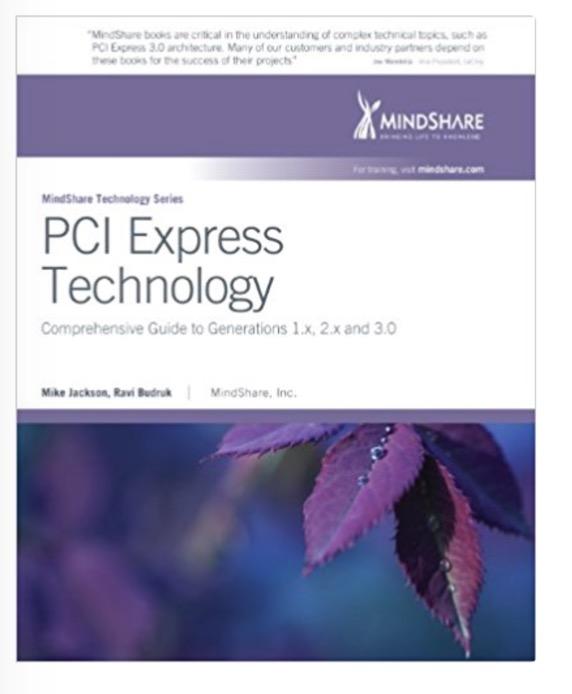Recent Posts
PCIeMini Board Features Two CAN Bus FD (Flexible Data Rate) Ports For Embedded Solutions
Posted by on
ESD Electronics (Germany) has extended its 402 series of CAN interface boards. The PCIeMini card features two CAN FD (Flexible Data Rate) ports available at 9-pin D-sub connectors.
Due to its compact design, the CAN interface board can be used in notebooks, laptops, MiniPCs, and hat-rail mounted PCs as well as embedded systems without the need for an external USB or Ethernet connection. The CAN-PCIeMini/402-2 is an add-in PCI Express Full-Mini card that features two electrically isolated CAN FD interfaces with an on-board network termination. It is based on the provider’s Advanced CAN Core technology (esdACC). This FPGA supports bus mastering (first-party DMA) to transfer data to the host memory. This results in a reduction of overall latency on servicing I/O transactions in particular at higher data rates and reduces host CPU load.
Due to the usage of MSI (Message Signaled Interrupts) the host interface board can be operated for example in Hypervisor environments. It provides a 64-bit hardware timestamps for CAN messages. Driver software for Windows and Linux comes with the product as well as the company’s CAN Tools, which can be downloaded free-of-charge.
Features
- 2 CAN (FD) interfaces according to ISO 11898-2
- Bus mastering and local data management by FPGA
- PCIe® Mini interface according to Mini Card Electromechanical Spec. R1.2
- Supports MSI (Message Signaled Interrupts)
- Full-Mini Card (Type F2) form factor
- Software drivers for Windows® and Linux® included free of charge
- Optional CAN layer 2 software drivers for real-time operating systems
- CANopen®, J1939 and ARINC 825 protocol libraries for Classical CAN applications
- ISO 16845:2004 certified esd Advanced CAN Core (esdACC) technology
- High resolution hardware timestamps
More Resources
- Download/View the ESD Electronics CAN-PCIeMini/402-2(-FD) data sheet (PDF)...
- More Information...
PCI Express 3.0 is the latest generation of the popular peripheral interface found in virtually every PC, server, and industrial computer. Its high bandwidth, low latency, and cost-to-performance ratio make it a natural choice for many peripheral devices today.
Each new generation of PCI Express adds more features, capabilities and bandwidth, which maintains its popularity as a device interconnect.
MindShare's books take the hard work out of deciphering the specs, and this one follows that tradition.
MindShare's PCI Express Technology book provides a thorough description of the interface with numerous practical examples that illustrate the concepts.
Written in a tutorial style, this book is ideal for anyone new to PCI Express.
At the same time, its thorough coverage of the details makes it an essential resource for seasoned veterans.
Essential topics covered include:
- PCI Express Origins
- Configuration Space and Access Methods
- Enumeration Process
- Packet Types and Fields
- Transaction Ordering
- Traffic Classes, Virtual Channels and Arbitration (QoS)
- Flow Control
- ACK/NAK Protocol
- Logical PHY (8b/10b, 128b/130b, Scrambling)
- Electrical PHY
- Link Training and Initialization
- Interrupt Delivery (Legacy, MSI, MSI-X)
- Error Detection and Reporting
- Power Management (for both software and hardware)
- 2.0 and 2.1 Features (such as 5.0GT/s, TLP Hints, and Multi-Casting)
- 3.0 Features (such as 8.0GT/s, and a new encoding scheme)
- Considerations for High Speed Signaling (such as Equalization)
 Loading... Please wait...
Loading... Please wait...


